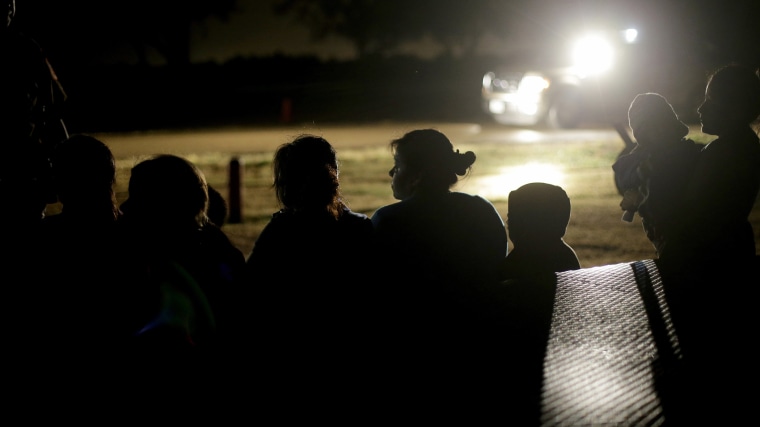In late January, Vice President Mike Pence reflected on a conversation with Juan Orlando Hernandez, the president of Honduras, and "commended" Hernandez for "the proactive and vigorous response to the most recent migrant caravans, including the arrest of several organizers."
Pence went on to express a commitment "to building a closer relationship with the Hernandez Administration and disavowed any efforts by opportunistic political actors to distract from our priorities."
The day after the vice president praised the Honduran leader, Donald Trump condemned the Central American country and its leaders, and threatened to end U.S. aid.
Last week, there was a curious replay. Homeland Security Secretary Kirstjen Nielsen published a message on Twitter expressing her "profound gratitude to our Central American allies" in Honduras, Guatemala, and El Salvador "for their commitment to our common cause of secure borders [and] more orderly migration flows." Nielsen signed a compact last Thursday to solidify the partnership.
Her boss' next step was, alas, predictable.
President Trump plans to slash hundreds of millions of dollars in aid to three Central American countries in retaliation for what he called their lack of help in reducing the flow of migrants to the U.S. border.The move was one of Trump's harshest yet as he escalates a confrontation with Mexico and Central America over a surge in irregular migration, largely involving children and families seeking asylum.
For the record, I'm a little skeptical Donald Trump will follow through on this. Administration officials have already suggested there may be a congressional component to the policy, and if it falls to lawmakers to help the White House plan, the president's gambit will fail.
But whether Trump is serious or posturing, it's important to understand just how spectacularly bad an idea this is.
The landscape is fairly straightforward: many families, facing nightmarish conditions in the Central American "Northern Triangle," have fled their homes in search of safety. Many, not surprisingly, have sought refuge in the United States.
Trump, of course, doesn't want them here, and he's furious with officials in Honduras, Guatemala, and El Salvador for not stopping these migrants from reaching the U.S./Mexico border. It's why he's threatening to cut off American financial assistance.
In practice, the Republican has this backwards: if he cuts off aid to the Central American nations, local conditions will deteriorate further, which -- you guessed it -- will lead to more migrants.
Trump's position effectively collapses on itself after 10 seconds of scrutiny: he sees desperate Central Americans fleeing awful conditions, and he hopes to stem the tide by making awful conditions worse.
U.S. aid to the "Northern Triangle" has made a difference. Ending that aid will produce more of what the White House says it wants less of.
To know anything about Donald Trump is to know he often peddles nonsense he doesn't mean. With this in mind, the best case scenario here is that the American president is just blowing off some steam, lashing out with public threats he has no intention of acting on.
The alternative is, Trump will deliberately hurt Honduras, Guatemala, and El Salvador, which would be among the ugliest and most counter-productive mistakes of his presidency.
